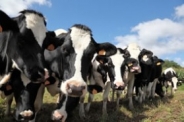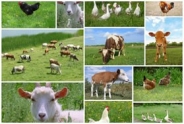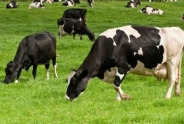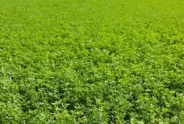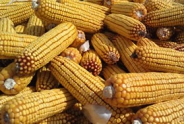Colostrum, more than just IgG
Jackson Wright, Dairy
Northwest New York Dairy, Livestock & Field Crops
January 3, 2012
Colostrum is different from milk as it contains a mixture of both lacteal secretions and proteins found in blood serum. Colostrum production is under hormonal control and is influence by estrogen, progesterone, corticosteroids, growth hormones, and prolactin. During late gestation high levels of estrogen and progesterone initiate colostrum production. At parturition, the spike in corticosteroids and drop in progesterone facilitate the transition to normal milk production. In general, the first six milkings after parturition are considered colostrum due to differences in milk composition.
These differences in milk composition include higher levels of protein, fat, carbohydrates, vitamins and minerals. In addition, high levels of fat and lactose provide the energy necessary for the calf to regulate its own body temperature. This is critical, as research has suggested that without this energy source calves fat stores would only last about 18 hours. Moreover, colostrum represents the first time the newborn calf will obtain nutrients through digestion instead of from the placenta or maternal blood supply. In addition to energy, the high levels of vitamins and minerals in colostrum may be necessary to initiate the calf's metabolism and facilitate the development of its own digestive system. More interestingly, researchers have discovered that colostrum contains high levels of numerous growth hormones which include insulin-like growth factor I (IGF-I) and insulin-like growth factor II (IGF-II), epidermal growth factor (EGF), transforming growth factor (TGF), insulin, cortisol, relaxin and thyroxine. Most notably IGF-I and II have been shown to be important for both mammary development and maturation of the digestive system, and may influence the long-term thrift and performance of the animal. Finally, because colostrum is fluid this helps hydrate the neonate and the warmth helps the calf overcome the initial shock of entering the world.
Combined these factors show how high quality colostrum is more than just IgGs and feeding this first meal as soon as possible following parturition can influence the long-term thrift of the animal and improve performance as she transitions into the lactating herd.
Upcoming Events
Pasture Walk at C&H Farms of WNY, LLC
August 26, 2025
Akron, NY
C&H Farms is new to grazing beef cows. Come out to view, discuss, and learn what is working and what needs some adjusting.
Dairy Bovine Reproduction and Artificial Insemination Training Course en Espanol
October 14 - October 15, 2025
Join us for a two-day workshop with hands-on training that will be offered in Spanish in cooperation with Javier Cheang, Genex. Space is limited, register today!
Inaugural New York State Agritourism Conference
November 10 - November 11, 2025
Saratoga Springs, NY
SAVE THE DATE! Inaugural NEW YORK STATE AGRITOURISM CONFERENCE presented by Cornell Cooperative Extension Agritourism Program Work Team
Announcements
We're Hiring: Area Dairy Management Specialist
To apply:Please apply via Academic Jobs Online (https://academicjobsonline.org/ajo/jobs/30185).
Qualified candidates should submit a short cover letter, curriculum vitae, and contact information for three references.
Applications must be submitted by July 31, 2025.
For more information, please contact Peter Landre at ptl2@cornell.edu. Additional information about the Northwest New York Dairy, Livestock and Field Crops Team can be found at https://nwnyteam.cce.cornell.edu/.
Follow us on Instagram
See photos and reels of our most recent events and programs!Join us on Facebook!
Follow us on Facebook to get up to date posts about events, workshops and everything NWNY!Add us on LinkedIn!
Connect with us on LinkedIn to get more information about upcoming workshops and programs!

